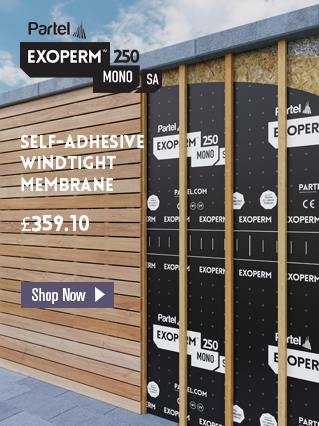Should new construction be windtight ?
It sounds like an obvious answer but until now very few people even consider it. It is an important part of the construction fabric and although it may not cause the same heat loss or structural damage as ineffective airtightness its benefits should not be overlooked. This a change in thinking for many professionals who for years have been encouraged to have as much ventilation as possible in the roof space. In the past we were used to bituminous roof felts which created issues with condensation and construction damage and necessitated large amount of in roof ventilation (Wind !) More recently various qualities of breathable membranes have come to the market which have helped but are not designed to deal with the levels of humidity in the modern homes and may still experience condensation if airtight measures are overlooked. It is still possible to ventilate the roof as before but this allows the cold air to cool the insulation layer thereby affecting insulation performance.
We should also consider that the average family home of 2 adults and 2 children can create 10 Litres of water vapour per day. Airtight membranes are designed to stop >90% of water vapour and will allow the roof membrane to dry the construction without overloading. Improved results can be achieved by making your construction Windtight and Airtight. Our windtight membranes (Roof felts) have two purposes - to protect the construction during the construction process and afterwards to form part of a breathable construction that can allow the construction to dry correctly.
Benefits, Implications
- Without windtightness U Values can be up to 1.5 times higher than the calculated figures due to thermal bypass
- Thermal bypass can occur when buildings are airtight but not windtight. This weakness allows air to move around or through insulation. In the roof, this occurs when the felt has not been taped or sealed at the eaves.
- Decreases losses associated with possible holes in the insulation layer.
- Decreases the chances of water ingress
Windtight membrane requirements
- Rain tight, airtight,vapour permeable and compatible with the airtight layer (Contact us for free WUFI analysis to ensure correct specification)
- High mechanical strength - Our Exoperm 250 offers up to 5 times the tear resistance of some commonly used membranes
- UV Stable, flame resistant, suitable for temperature ranges from -20° C to +80° C
Option 1 Windtight using Partel EXOPERM windtight membrane, CONEXO & ACRALINE
Option 2 Windtight using Partel Exoperm Connect windtight membrane with integrated tapes.
Windtight Accessories We recommend making all penetrations wind tight and water tight using either BUTAFLEX or CONEXO - the award winning flexible butyl tape seen here sealing at chimneys and ventilation ducts. Butaflex can withstand temperatures from -40° to +90 °C, is highly flexible - (moves with structural elements) and elastic ( can be formed in 3 dimensions)
Nail Seals Nail seal tapes avoid rainwater penetration through the nailing and screw-fixing of battens and counter-battens.









